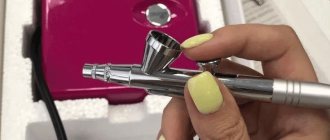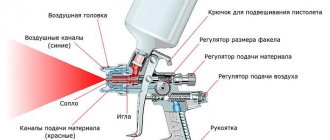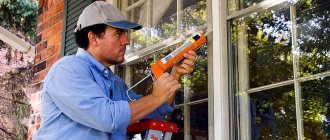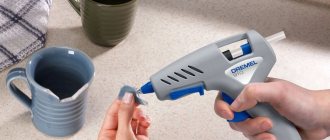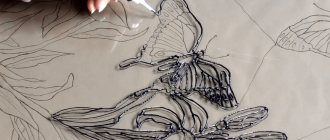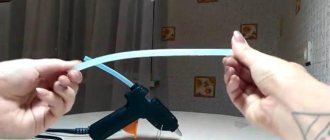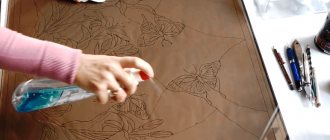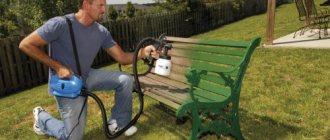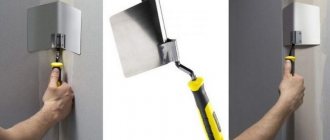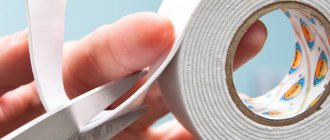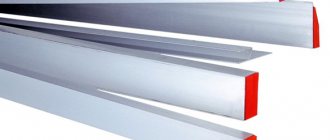Without exaggeration, modeling can be called one of the most exciting hobbies. Many people come into the world of models, but not many stay. Not everyone has the patience to master the skills of a person who creates exact replica models to at least an average level.
You will find high-quality products for airbrushing on the website https://artcompas.ru/. If you have free funds and are ready to invest them in your profession or hobby, then it is optimal to choose products from this site.
The work of making a model is complex and painstaking. Sometimes it is comparable to the work of an artist or a jeweler and, of course, a designer.
Professionals do everything with their own hands. Even the smallest details. This is the highest degree of skill.
And today fans are offered a huge selection of ready-to-assemble kits. But here too there is room to prove yourself. There is no need to construct a model purchased in such a set. And this greatly simplifies the task of creating a model.
It just needs to be carefully glued or assembled and painted. Of these two operations, painting will probably be even more difficult than assembly.
Preparing the model for painting
As with any work with plastic or metal, the surface must first be prepared before painting:
- matting - the formation of adhesion due to the application of fine sanding abrasives with a grain value of 1500 or 2000;
- degreasing - before applying the design, it is necessary to degrease the surface using a universal anti-silicone cleaner and a special degreasing cloth, because touching the surface with your hands or other ways of getting fat on it is possible;
- priming - applied after the surface acquires an even matte shade without unevenness, possibly even in several layers.
Airbrush capabilities for modeling
In order for the model to become an exact copy, it must be painted like the original. With full compliance with all necessary processes, while conveying all the subtleties of the overall background and shades of the coating. Some sets include brushes and paints. But this is for those who took up the assembly for the first time.
By painting your model with brushes, you will only make it look like the original, no matter how accurately you assemble it. And for high-quality coloring in modeling there is a special tool, and it’s called an airbrush.
Using an airbrush, paint and varnish coatings are applied to the body and parts of the model with high quality. You can set color tones and halftones, depict camouflage colors, apply signs and write inscriptions. Airbrush basics for beginners: how to use an airbrush?
However, before you start working with an airbrush, you need to understand how it works, what types of airbrushes for modeling there are, and what features different types of this tool have. All this knowledge will help you understand which airbrush is more convenient for solving certain problems and which model of the tool is right for you.
Which is better: heated floors or radiators?
Warm floorBatteries
Painting models with an airbrush - applying the base
The base is applied over the primer with repeated movements in layers of thin spraying. That is, with each wave of your hand, you need to press the airbrush trigger down, opening the way for the air flow and pressing the air valve, and then pull the lever towards you, allowing the paint to come out.
If you simply press the trigger down and back once and move it back and forth near the surface, the paint will lie with air bubbles and bumps, forming a “shagreen” pattern. Therefore, when applying the base layer, there is no need to rush; it is better to work thinly and in layers. You can immediately place accents on light and shade, based on the logic of where the light comes from, where the tone will be denser and darker.
Those areas that need to be painted a different color and protected from possible pollination can be covered with masking tape or very thin vinyl contour tape.
Selection of colors
As mentioned earlier, this art is most common in automotive themes, but it is not limited to that. You can increasingly see such drawings on furniture, on walls, even on computers and mobile phones. For each base, its own type of composition is selected.
Paints intended for special effects.
Liquid acrylic
- Acrylic airbrush paint is currently the most popular. Most of all, it is preferred by professionals who know first-hand about painting. For beginning craftsmen, liquid acrylic can hold certain surprises. (See also the article Painting on glass with stained glass paints: features.)
- The color palette here is the widest, from translucent shades to bright, stylized gold and glowing neon compositions. These paints have a good level of hiding power, which greatly facilitates the artist’s work, eliminating the need to apply multi-layer coatings.
- They have unique adhesion properties, plus they have a significant time reserve when hardening, which allows you to create special effects such as wet splashes or drips.
- After drying, liquid acrylic forms a hard but elastic surface of a thin layer of plastic, which can only be washed off using special chemicals. This feature is very convenient when applying a new layer; the artist can improve the painting without fear of dissolving the lower layer.
- It is acrylic paint for an airbrush that is easiest to prepare with your own hands, the instructions are simple, just mix the composition with clean distilled water until it reaches the desired consistency. But acrylic paints for an airbrush are fraught with a certain danger; if you incorrectly adjust the diameter of the nozzle or do not wash the tool in time, the airbrush will “spit.”
- The big advantage is that these compositions have a water-dispersed base and are absolutely non-toxic. Thanks to this, they can be used both outdoors and indoors without using protective equipment or additional ventilation.
- Liquid acrylic, at this time, is the most optimal composition for applied, professional airbrushing. They can be used to draw on almost any surface; the main thing is to cover the image with a special varnish after finishing the work. (See also the article Primer for paint: types.)
Features of working with acrylic paints
When painting models with an airbrush, the quality of the paint, its hiding power, dispersion and other properties matter. Among the paints for modeling, enamels and water-acrylic paints stand out. Enamels have a number of advantages:
- metallics look more realistic;
- transparent enamels can create a candy effect, like on real cars, if the task requires it;
- All enamels fit and adhere to the surface better than acrylic.
Painting models with acrylic paints is overwhelming due to the fact that all the advantages of enamel are usually canceled out at home by a rather pungent odor. Having a wide palette in the rulers, with a water-acrylic ruler, beginners in modeling may have problems with dilution. Especially with a shallow trigger stroke, acrylic particles quickly harden on the needle and quickly clog the nozzle, so it is better to dilute the paint to a “milk” state. As a thinner, you can use vodka or a proprietary thinner from the manufacturer (airbrush thinner). If, after liquefaction, the paint continues to clog thin nozzles with a diameter of 0.15-0.2 mm, a drying retarder - retarder medium - can help.
When choosing the right airbrush, you can rely on the following rule:
- 0.15-0.3 mm – drawing camouflage and other subtleties with an airbrush using the “free” hand method;
- 0.35-0.5 mm – applying a base layer, priming and varnishing the model. Because with an airbrush with a narrower nozzle it is extremely inconvenient to dilute primers and varnishes, which are always thicker in consistency.
The problem of thickness and possible sticking on the needle is especially pressing when painting models with acrylic paints. And when bred, they may lose their originally inherent qualities. Also, the soil may be coarsely dispersed and form a difficult-to-wash film on a thin diameter.
After painting models with an airbrush and finishing work with acrylic rulers, you must thoroughly rinse the tool with the same vodka or alcohol; if the case is already advanced and there are old particles of dried paint left, washing liquid will help to soak and wash them clean.
If, after the stage of painting the models, the airbrush is clogged, a video on disassembling and reassembling down to the last bolt will save you from possible breakdown of spare parts. Although it is better not to let it become completely clogged and to clean the tool immediately after work with alcohol or rinsing.
Operating principle and varieties
The work of an airbrush for modeling (as well as all its other brothers) is based on the Bernoulli effect. This can be explained this way: air, pressurized by a compressor in one tube, forces the paint to rise through the other. In the area of the nozzle or nozzle, both flows mix and form an aerosol, which, when sprayed, covers the surface to be painted with an even layer.
This ensures high quality painting.
The large number of airbrush models offered on the market poses a challenge for modellers. How to choose the airbrush that will be necessary?
By and large, the operating principle of all such devices is the same. But depending on the model, the instrument’s execution mechanism has some (sometimes very significant) differences. That is why it is important to know what device models exist and what, in fact, are their distinctive characteristics.
Painting a tank with an airbrush
It is almost impossible to obtain a uniformly painted surface of a model with a brush or sponge; the level of accuracy for such work can go off scale. Some paints can only be applied with an airbrush. Camouflage stripes on the tank are drawn at a small distance from 1.2 to 1.4 bar. The thinner the line you need to create, the less you need to press the trigger of the airbrush and draw closer to the surface; if the thickness is a hair, you can even remove the protective cap of the needle from the airbrush, drawing using the “open” needle method. It is better to keep the airbrush nozzle normal to the surface so that the edges of the camouflage are not created too blurry. When painting a tank model with an airbrush, you cannot keep the tool in one place near the surface; it is better to make movements along the contour of the model.
As a rule, the annotation for the model indicates the exact colors with paint numbers for each manufacturer. You can rely on this when choosing the right colors, or simply select similar analogues and color them.
The law of aerial perspective - based on the scaling of the model: objects located quite far away seem to be brightened by the thickness of the air, as if they were under a blue filter. We multiply the number of meters through which we observe the model and see it in its entirety by the scale. We lighten all colors using the resulting %.
Cleaning the airbrush after use
After finishing work, you must thoroughly clean the airbrush of any remaining paint. To do this, first pour the solvent into the tank and rinse it well, then carefully pull out and wipe the needle. To clean the internal surfaces of the nozzle and small parts, use cotton swabs soaked in solvent. After cleaning all parts, the device is assembled and blown well with compressed air. Remember that proper cleaning and regular lubrication of rubbing parts will extend the life of your airbrush for a long time!
Washes, special effects, decals and other modeling tricks
You can show additional volume with the help of correct toning of the model, i.e. emphasizing the relief and texture of the surface by darkening the recesses and highlighting the upper parts with highlights. Removers are thinly diluted paints with a reduced pigment content that flow into recesses and cracks. When the wash dries, remove the excess with a cotton pad. It is important to pay attention to the chemical composition of the remover, which may contain solvents and affect the acrylic painted surface layer.
The “dry brush” method is where a light pigment or slow-drying paint is rubbed into the base coat in the lightest areas. The brush should have a minimum coloring effect, so it should be wiped dry initially.
Decals are a technique for applying decals, most often used to transfer symbols or attributes of various branches of the military in modeling. The decal may appear whitened due to the fact that residual air bubbles accumulate between the decal and the model. Most often this occurs when the model is coated with matte varnish. Therefore, there is a reason to coat the areas reserved for decals separately with a glossy varnish. General leveling can be done by painting the surface with a final layer of matte varnish.
Stages of work in airbrush technique
Artists apply the image in several steps:
- Sketch development. The drawing is modeled and adjusted to the dimensions of the car without disturbing the composition or integrity of the body.
- Preparing the area for painting work. The car body is cleaned and primed.
- Selection of paint and varnish compositions. The structure, durability, saturation, and brightness of the image depend on the selected enamels. Airbrush paints should be suitable for the tool, easy to apply, allowing you to create artistic effects.
- Graphic display of the sketch on the machine.
- Drying the drawing, varnishing. Additional processing gives the airbrush a finished look and protects the design from damage.
Effects of dirt and streaks
The tank, being a piece of military equipment, is subject to corrosion and is constantly covered in dirt and oil stains. Over time, the paint “weathers” from the surface. Painting a tank model with an airbrush step by step:
- covering the tank model with the main color;
- highlighting the most rubbing surfaces of the model using paint several tones lighter than the base;
- In life, after a short period of use, a dark film of dirt and smudges forms around the most protruding points on the tank parts, which accumulates in all the recesses of the model. You need to realistically reproduce these moments, which a black wash will help with. You can also use it to level out dark and light transitions. The black wash highlights small parts of the tank - welds, bolts and rivets, etc.;
- Glossing the surface - Gloss makes the protruding parts stand out even more and makes the surface look like painted steel instead of plastic. You can add glossy varnish to the paint mixture or blow it over the paint;
- The lower part of the tank hull can be covered with a simulated earth effect.
Weathering is an effect that gives any military equipment more realism. When done correctly, it helps to hide the “jambs” of painting; if handled ineptly or overdone, it spoils the appearance of the work and negates the result of the first stages of painting. Weathering also focuses attention on the small details of the model. To add realism to weathering, the modeler must reproduce for himself the conditions in which the equipment was located (climatic and natural corrosion, historical and military).
Weathering stages:
- imitation of scratches and chips on the surface - manual application of wear with a piece of sprue with a slight bend at the tip. Then paint is applied to all edges and corners of the models, preferably oil-based. The number and depth of scratches and chips depends on the background of the tank model, based on the historical context or a personally invented theme. However, the fenders should be scratched much more severely than the top of the tank's hull and turret. For greater realism, in addition to the edges, you can lightly scratch the surface nearby, as a continuation of the marks. It’s better not to forget about the scratches along the hull and fenders, which appear as the tank passes through obstacles and rubble. At the end of this stage, after thorough drying, you can use a black lead pencil to go over the center of the scratches and cracks, but selectively, and not over all.
- imitation of dirt and dust - many modellers usually simply take filtered earth, moss and water-acrylic paints with earth tones, mix in PVA and water and apply it to the model. This is followed by drying for a day. It is most logical to apply dirt to the bottom of the hull and track elements. The main thing is not to overdo it.
- wash - a wash applied in several layers helps to achieve a more realistic effect. The model is covered with a thin layer of wash with a brush. The movements of the brush go in one direction: on vertical and inclined ones - from top to bottom, on horizontal ones - from the center to the edge. After applying the first layer of wash, you can take a wider brush and work on flat surfaces, and not just run it into the recesses and depressions. After a short drying period of 10-15 minutes, you can remove excess remover with a brush. You can also complete this step with a third layer on the bottom of the body.
- lightening No. 00 are cut off, then a light earth color paint is applied to it, then wiped with a napkin . And use the dry brush method to walk along the lower part of the body.
- fresh dirt and installation of tracks.
Distinctive features of airbrushes for modelers
So, the airbrushes for modeling offered for sale differ in the following categories:
- According to the air supply device: flow-through and lockable.
- By type of mixing paint with air: external and internal mixing.
- According to the method of setting the working cycle, they are divided into single- and double-acting devices.
- By type of paint supply: top, bottom and side.
- According to the nozzle installation mechanism.
Now a little more about these differences;
- Air supply. Everything is simple here. There are airbrushes in which air is supplied in one mode and the supply intensity is not regulated; they are called flow-through. The lockable ones have a shutter button with functions for adjusting the strength and saturation of the air flow.
- Mixing. Airbrushes with external mixing of components are simple in design, but have increased reliability. Their adjustment needle is motionless or does not exist at all. Mixing occurs outside the device body. There is no possibility to change the course of the work process. Such devices are convenient for painting large surface areas. In an internal mixing device, the needle is movable and diffusion occurs in the atomizer body. The design itself is considered complex and requires some experience and practice to work with it. The coloring result is of higher quality.
- Setting the work cycle. Single mode airbrushes are further divided into two types. In the first, the intensity of the air flow is regulated, in the second, you can change the amount of paint supplied. Dual mode tool options are also divided into two subtypes. The first is dependent action. This is when during operation a change in the intensity of the air flow causes an automatic change in the amount of paint supplied. The second is independent action. This modification allows you to change both the air pressure and the amount of ink supplied independently during use. Such a tool is very difficult to operate, but when handled skillfully it shows the highest quality of painting.
- Paint supply. It's not difficult here either. Acrylic paints for airbrush? It all depends on the location of the reservoir with paint material: below, above or on the side. The latter option is considered more universal and convenient, and does not block the view during operation.
- Nozzle mounting mechanism. According to this parameter, devices are divided into threaded ones, in which the nozzle is attached using a thread, and those with a combined, floating, self-centering nozzle. This mounting method allows for fine adjustment between the needle, nozzle and locking head.
We sorted out the differences. But still, which airbrush is better to choose if you have never encountered this before? More on this later .
